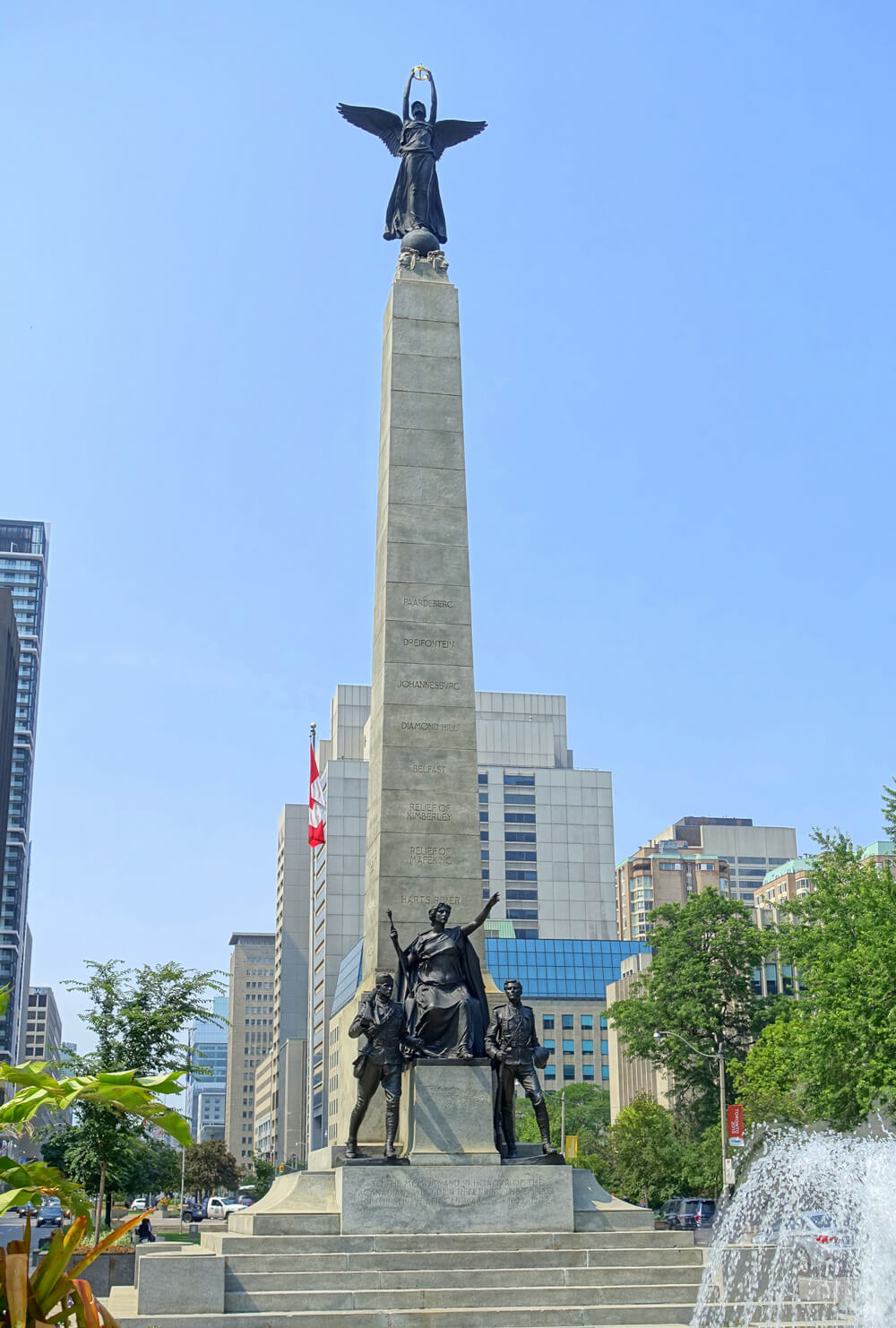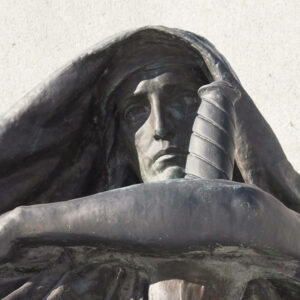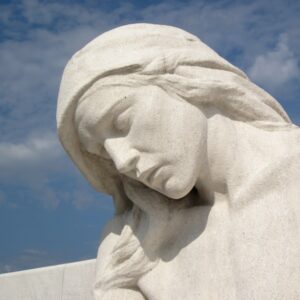South African War Memorial 1904–11

Walter S. Allward, South African War Memorial, 1904–11
Bronze and granite
University Avenue and Queen Street West, Toronto
The South African War Memorial on University Avenue in Toronto, which honours Canadian soldiers who died in South Africa during the Boer War (1899–1902), was Allward’s first multi-figure sculpture and a significant departure from the single-figure war memorials popular at the time. The unanimous choice of the committee in charge, his design features a group of three bronze figures near the base, representing Canada sending her sons to war, and a seventy-foot-high grey granite column supporting a winged female figure representing Victory (inspired by The Winged Victory of Samothrace, c.200–190 BCE), standing on a globe and holding a golden crown in her outstretched hands. On the front and sides of the column the names of the battles in which Canadians participated are listed, and below the three figures is the inscription, “To the Memory and in Honour of the Canadians who Died Defending the Empire in the South African War 1899–1902.”
-
Walter S. Allward, South African War Memorial (detail of Victory), 1904–11
Bronze and granite
Toronto
-
Artist unknown, Winged Victory of Samothrace, c.200–190 BCE
Parian marble
244 cm (h)
Louvre, Paris
-
Military parade on University Avenue with a view of the South African War Memorial in the distance, Toronto, 1915
Photographer unknown
The South African War Memorial is one of several monuments in Canada commemorating the Boer War. Other notable examples include the Boer War Monument, 1907, by George W. Hill (1862–1934), in Montreal, which features two bas-relief sculptures on a granite pedestal, a plaque with a profile of Lord Strathcona (who had financed a regiment known as Lord Strathcona’s Horse to fight in South Africa), and a bronze sculpture of a soldier struggling to control a rearing horse. Hamilton MacCarthy (1846–1939), widely recognized as one of the earliest masters of monumental bronze sculpture in Canada, also honoured the country’s Boer War volunteers, designing memorials for Ottawa (1902), Brantford (1903), Halifax (1903), and Quebec City (1905), all of which conformed to the traditional presentation of a lone soldier on a pedestal.
Allward’s work, the most ambitious Boer War monument in Canada in terms of scale, remained true to the tenets of Beaux-Arts sculpture, portraying figures in a static but realistic manner within a pyramidal composition. Its location had not been decided upon when Allward was awarded the commission. Having by then gained more influence over his projects, he suggested University Avenue as a suitable site, “some 600 feet about Queen Street on a circle of sod or of concrete, some 60 feet in diameter.” He further noted that the roadway “would divide to the right and left of the monument in a circular line and take up with the present road leading to the Parliament buildings,” thereby adding “much beauty to the entrance of the Avenue.” The committee accepted Allward’s recommendation.
Allward’s South African War Memorial was formally dedicated on May 23, 1910, but without Victory at the apex, as its completion had been postponed initially by funding shortages and later by transportation delays. Still, the monument was widely praised as Allward’s most ambitious and successful work, an assessment confirmed when Victory was installed in August 1911. The last piece of the sculpture, a bronze tablet listing Canadians killed in the Boer War, was delayed owing to a disagreement regarding the positioning of names. Ultimately, Allward’s suggestion that the names appear alphabetically in a single paragraph rather than in vertical rows was adopted and the panel was finished in 1914.

 About the Author
About the Author
 More Online Art Books
More Online Art Books
 Acknowledgements
Acknowledgements